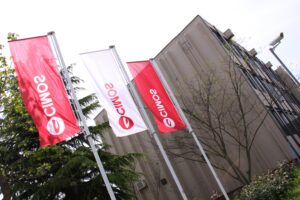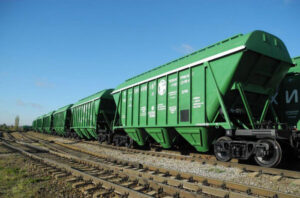
The Slovenian industrial giant Cimos, known in the former Federal Republic of Yugoslavia for the production of Citroën cars, plans to close its plant in Slovenia and move production to Serbia and Bosnia and Herzegovina. According to Dnevnik, a layoff program has been prepared that does not suit the representatives of the Union of Employees of the Metallurgical and Electrical Industry of Slovenia (SKEI) for the Kras and Primorska and Primorska regions.
According to Saša Ristić, the program was recognized as unprofessional because it did not specify the specific positions that would be retained. He noted that this is the worst layoff program he has ever seen.
Cimos has long been planning to move production to Gradac (Bosnia and Herzegovina) and Kikinda (Serbia). However, according to Ristić, this move is controversial because management should have first informed the works council, which did not happen, although the relocation of production is the official reason for the layoffs.
Cimos has had a plant in Hradac for many years. Ristić explained that the upcoming layoffs are also related to the planned relocation of production. He told Dnevnik that the Cimos management requires the trade union and the works council to give their urgent consent to the dismissals.
Of the 175 employees to be laid off, about 120 work in Senožec, while the rest are employed at Cimos’ production sites in Maribor and Vuzenice.
About Cimos
Cimos is a Slovenian company specializing in the production of components for the automotive industry. In 2020, the company was acquired by the German investment fund Mutares.
Financial results
As of 2022, Cimos’s revenue amounted to about 200 million euros. The company continues to work on improving efficiency and expanding production capacity.
Products and customers
Cimos produces a variety of components for the automotive industry, including braking systems, suspensions, and powertrains. The company’s customers include automakers such as Renault, PSA Group and Volkswagen.
Exports.
Cimos products are exported to various European countries, including Germany, France, and Italy.
Source: https://t.me/relocationrs/606

In February 2025, TAS Insurance Group (Kyiv) collected UAH 465.6 million in insurance premiums, which is 49.2% more than in the same period in 2024.
According to the insurer’s website, last month’s motor hull insurance premiums amounted to 14.3% of the total, or UAH 66.7 million, motor third party liability premiums – 50.97%, or UAH 237.3 million, which is 2.4 times more than in February 2014, and Green Card premiums – 23.12%, or UAH 107.65 million (+28.1%).
Under voluntary health insurance contracts, TAS Group collected UAH 22.1 million in premiums, and under property insurance contracts, it attracted UAH 6.4 million in insurance premiums.
Under other insurance contracts, the insurance group collected UAH 25.46 million.
TAS Group also reported that in February 2025 it paid UAH 188.6 million under the concluded insurance contracts, which is 26.8% more than the amount of indemnities for the same period last year.
Out of the total volume of payments, hull insurance accounted for 27.66% (UAH 52.2 million), which is 9.6% more than in February 2014, MTPL – 32%, or UAH 60.37 million (+14.1%), and Green Card – 22.4% (42.23 million).
The share of VHI in the company’s claims portfolio in February amounted to 15.4%, or UAH 28.95 million (+27.8%).
The company paid out UAH 4.88 million under other insurance contracts.
TAS was registered in 1998. It is a universal company offering more than 80 types of insurance products in various types of voluntary and compulsory insurance. It has an extensive regional network: 28 regional directorates and branches and 450 sales offices throughout Ukraine.

Ukraine, together with its European partners, is launching a new EU4Green Recovery East project aimed at developing a circular economy, sustainable water management and environmental data management, said Svitlana Hrynchuk, Minister of Environmental Protection and Natural Resources of Ukraine.
“The initiative covers the Eastern Partnership countries and will help them promote reforms. It will last for four years and has a total budget of 21.5 million euros. For Ukraine, which is on the verge of large-scale reconstruction, this is a great opportunity and significant assistance,” Hrynchuk wrote on Facebook.
She pointed out that, together with UNDP, Ukraine is currently working on a draft law “On Green Recovery,” which is fully consistent with the Green Taxonomy and EU experience. It will become Ukraine’s strategy for sustainable recovery, the minister emphasized.
“In addition, EU4Green Recovery East is an opportunity for Ukrainian businesses to increase resource efficiency and create new jobs,” she added.
The first steps have already been taken in preparing a work plan to adapt the Program’s activities to the specific needs of Ukraine. Technical meetings of experts in the relevant fields are ahead.
“The strategic partnership with the EU has already had its results, including in the field of environmental protection. In times of war, it is our support and our rear. I am confident that in the time of Ukraine’s reconstruction, these will be our joint successes and achievements,” summarized Hrynchuk.

The State Enterprise Guaranteed Buyer has announced an auction for the distribution of a quota to support the capacity of “other types” of renewable energy sources, which means bio- and small hydro generation.
According to the auction terms posted on the Guaranteed Buyer’s website, applications for participation are accepted until 20.00 on May 11, and the auction will be held in the Prozorro Sale system at 12.55 on May 12.
The term of the support is 12 years after confirmation of the commissioning of the facility for which the winner of the auction has acquired the right to support.
The maximum price offer of the participant is 12 euro cents/1 kWh.
As reported, investors ignored the first auction in 2025 to allocate a quota for the support of new capacity for 33 MW of solar power plants, which was to be held on March 13.
The maximum price offer of a participant is 8 euro cents/1 kWh. The support period is 12 years.
In an interview with Energoreforma at the end of January, Vladyslav Sokolovskyi, Chairman of the Board of the Solar Energy Association of Ukraine, noted that it is not possible to count on a successful “green” auction in March 2025, where the quota for the construction of 33 MW of SPPs will be distributed, since the quota for SPPs is very small, according to him.
The Cabinet of Ministers of Ukraine has set a total quota of 330 MW for green energy support for 2025: 250 MW for wind power plants, 33 MW for solar power plants, and 47 MW for plants using other types of alternative energy sources (except for wind, solar, blast furnace and coke oven gas, and only for micro, mini, and small hydropower plants).
In April 2025, auctions for 100 MW of wind power are to be held, and in July – for another 150 MW of wind power.
“Green” auctions were first introduced in 2024, but they ended in failure. There were no bids for the October 31 solar auction, and only one bid for the November 29 wind auction (according to the Ukrainian Wind Energy Association, from Atlas Global Energy LLC, a company with Turkish investments). Thus, both auctions were recognized as failed. In October-November, only about 0.9 MW of small hydropower was identified for support, while another 0.6 MW remained in question.

In February 2025, Ukrzaliznytsia (UZ) reduced the volume of grain cargo transportation to export destinations to 2,363.1 thousand tons, which is 496.3 thousand tons, or 17.4% less compared to January 2025, said Valery Tkachev, Deputy Director of the
Commercial Department, at a meeting of the UZ Exporters Office on Wednesday.
According to him, in February 2025, 2,171.0 thousand tons were transported to ports, which is 455.7 thousand tons, or 17.3%, less than in January this year, and 192.1 thousand tons were transported through land border crossings (40.6 thousand tons, or 17.5% less).
“Compared to February 2025/2024, the volume of grain cargo transportation in export traffic decreased by 28.5% (by 941.1 thsd tonnes),” emphasized the representative of UZ.
Mr. Tkachev noted that in January-February 2025, UZ transported 5,222.5 thousand tons of grain cargo for export, which is 1,448.2 thousand tons, or 21.7%, less than in the same period of 2024.
At the same time, 4 797.6 thsd tonnes were transported to ports in two months of 2025, and 424.9 thsd tonnes were transported through land crossings.
Therefore, the share of transportation volumes in the export traffic of grain cargoes in the direction of ports is currently 92%, and 8% by land.

Armenia has accepted Azerbaijan’s proposals on two unresolved articles of the draft peace agreement, which means the end of the negotiation process.
“Thus, the peace agreement is ready for signing. The Republic of Armenia is ready to begin consultations with the Republic of Azerbaijan on the time and place of signing the Agreement,” reads the statement published on the official website of the Armenian Ministry of Foreign Affairs on Thursday.
Yerevan also noted that it had offered to make a joint statement on the agreement, but Baku “preferred a unilateral statement.”
Earlier, Azerbaijani Foreign Minister Jeyhun Bayramov said that Armenia had agreed to the latest amendments. According to him, the next step should be the removal of clauses from the Constitution of Armenia that Azerbaijan regards as territorial claims, as well as the dissolution of the OSCE Minsk Group.